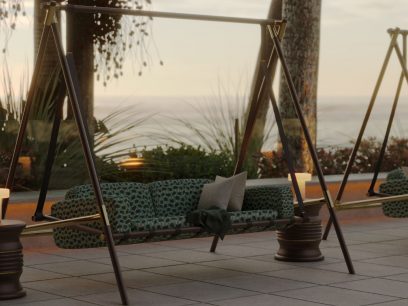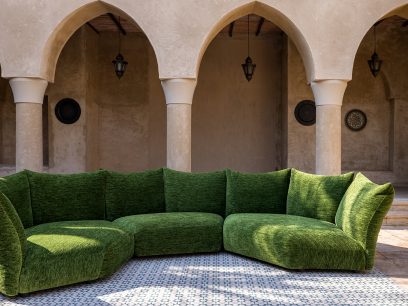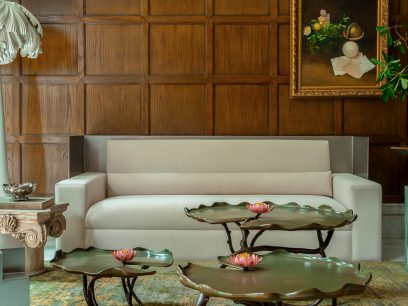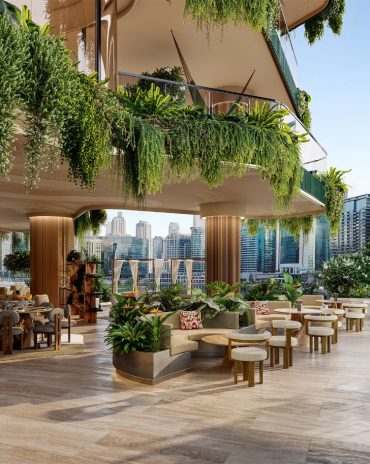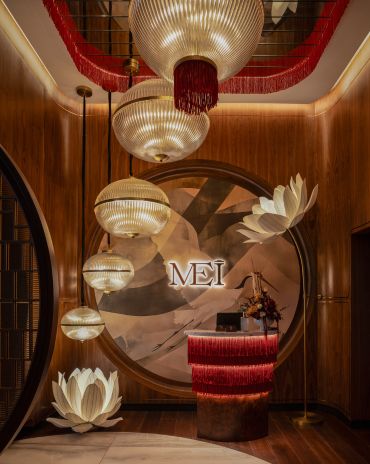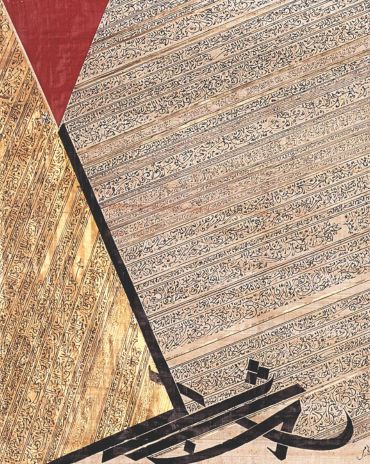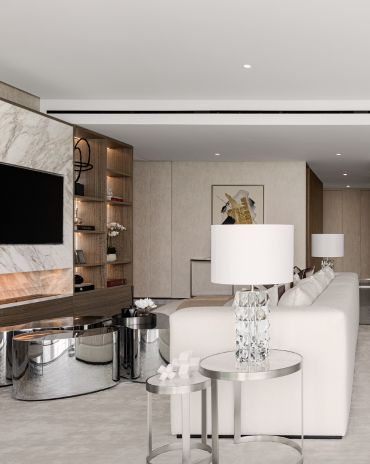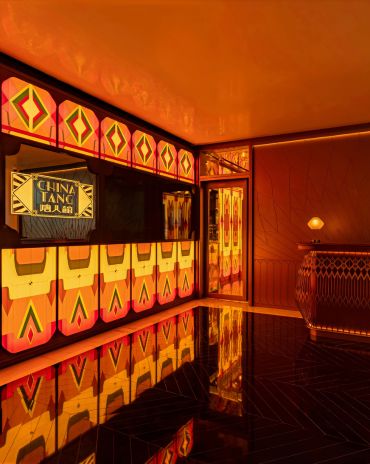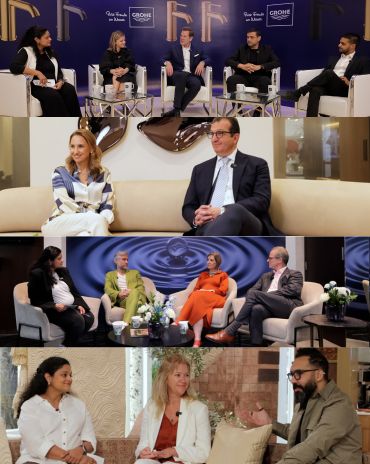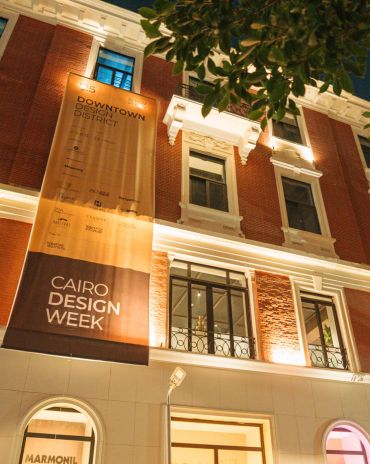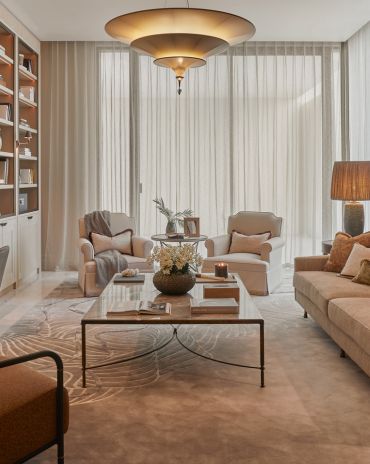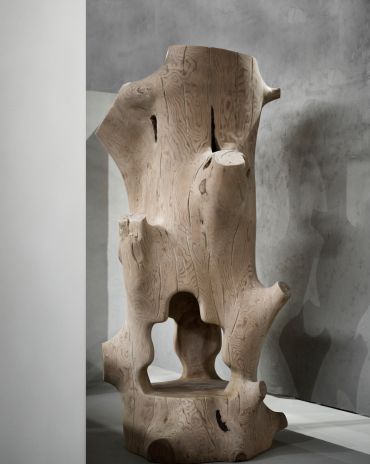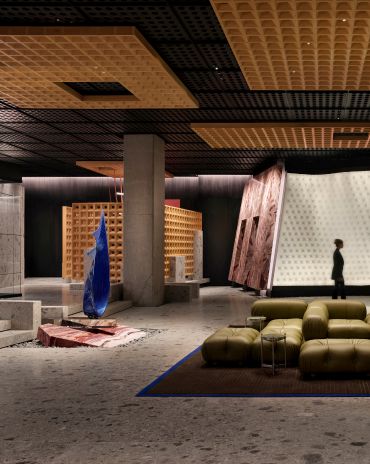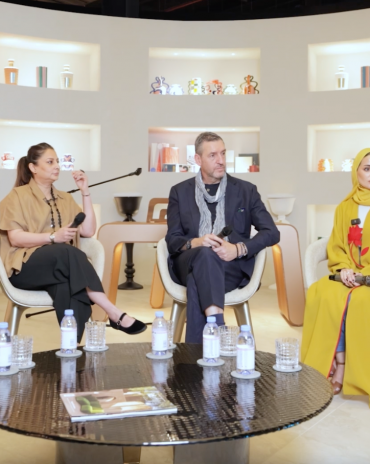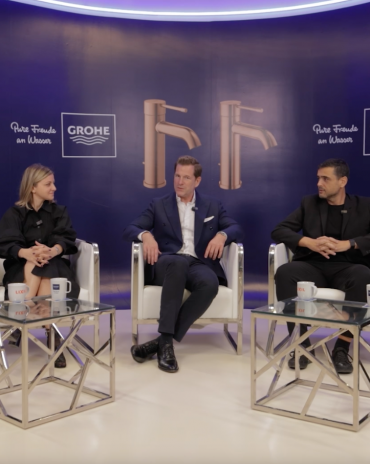Copyright © 2025 Motivate Media Group. All rights reserved.
Shifting Sands
The curvature of lunar-like desertscapes characterises this Downtown Dubai address
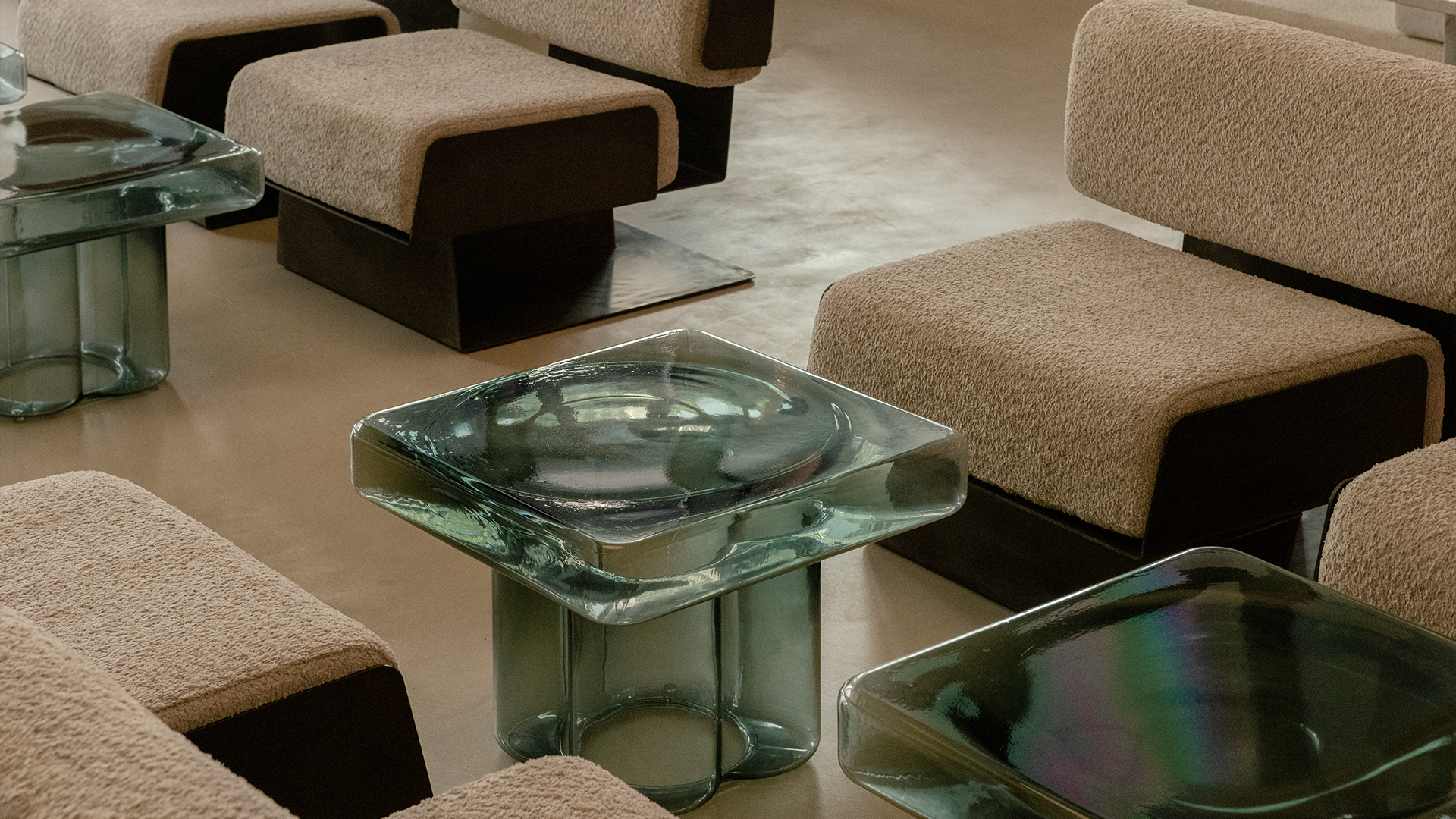
Form and materiality take centre stage at HPlace Cafeteria, a community coffee shop in Downtown Dubai, designed by Aleksey Klimov and Eugene Cherkas of Atelier Prototipi. Here, the desert’s codes are distilled into sculptural simplicity, resulting in a space with an architectural language informed by the rhythms of shifting sands and the fleeting glow of moonlight.
“Observing the lunar landscape among the dunes is one of the most impressive sights. If you listen closely, you can hear time flowing in the moving grains of endless waves and feel its breath,” Klimov reflects. It’s this almost meditative observation that became the conceptual bedrock of HPlace. The desert, after all, is an archive of time, its contours carved out by wind, sun and silence. The team at Atelier Prototipi sought to translate this cadence into an immersive environment, one that feels at once grounded and weightless, ancient and contemporary. Cherkas recalls the experience that shaped their approach: “We were sitting at the edge of the desert, watching the wind lift and sift the sand, grain by grain, as if reconsidering what shape it wanted to take. There’s no other place where time feels so tangible – it dissolves, slows down, merges with the monumental silhouettes of dunes. We found that the regional landscape isn’t just physical, it’s a play of sunlight and moonlight, shifting the boundaries of imagination.”
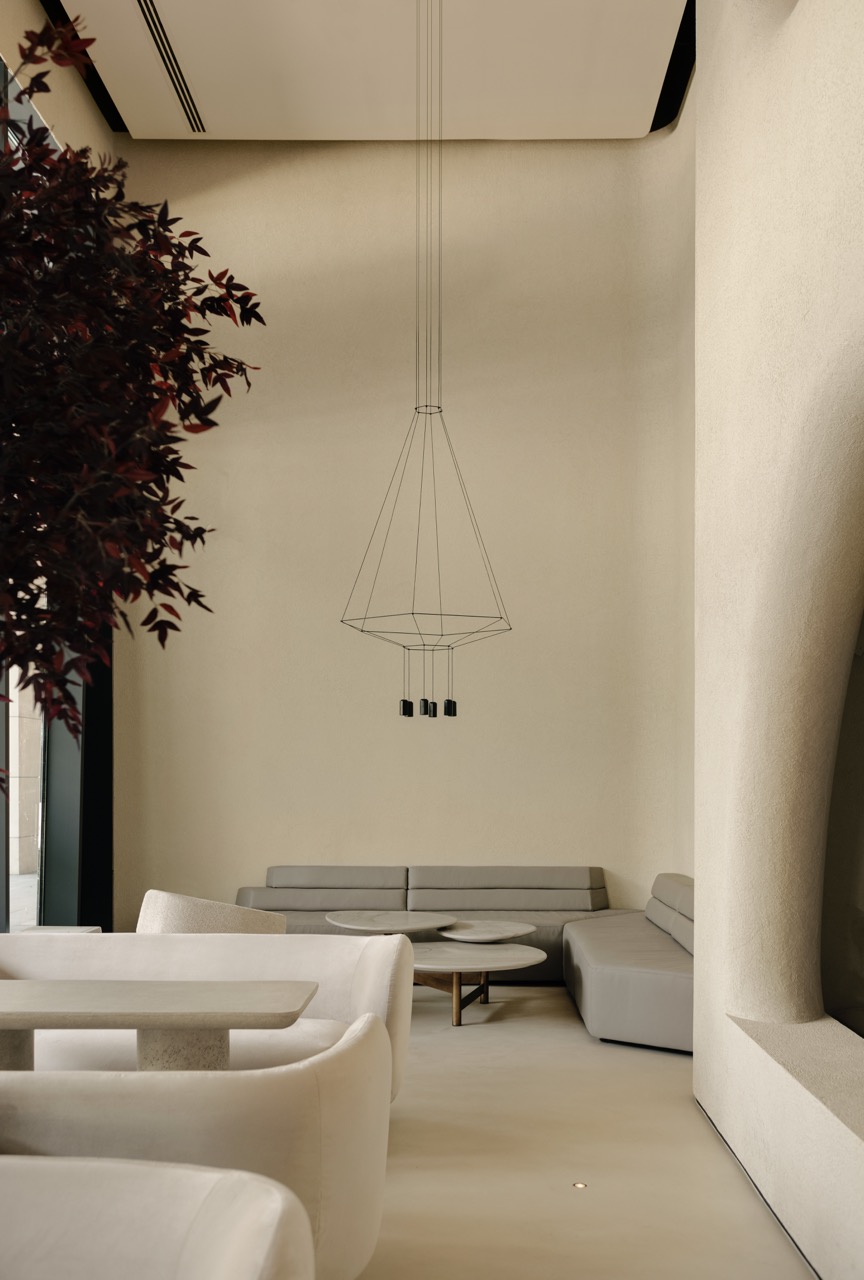
Wireflow chandelier by Vibia and a custom-made brass and marble coffee table
Inside HPlace, this philosophy materialises in smooth, oval contours that echo the forms humans have carved into desertscapes for centuries. The walls, finished in both raw and polished mineral plaster, capture a sense of erosion, the passing of time and the marks left by wind and water on stone. A balance is struck here between purposeful refinement and natural imperfection. Travertine blocks – some with a honed, velvety finish, others left deliberately rugged – anchor the space, forming the base of the hospitality zone and two sculptural bars.
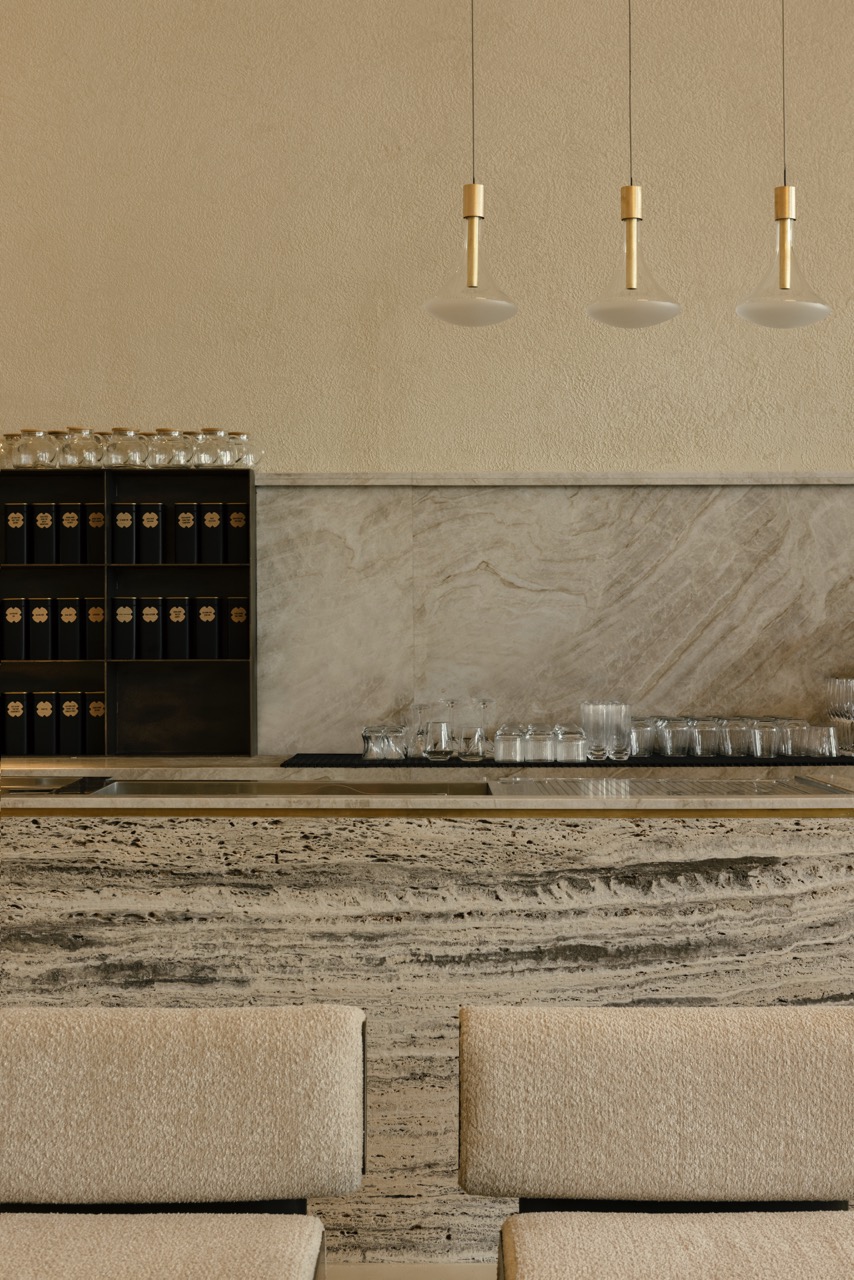
The stone forms are created in smooth and rough processing, mimicking the natural uneven surface of the stone, which gives a pleasant self-finished appearance. The lights are Cathode suspension lamps by Davide Groppi
Glass elements punctuate an earthy palette, most notably the Soda tables by Miniforms, which Cherkas suggests are a personal favourite: “The transparent glass forms capture and refract light, transforming into vessels that seem filled with liquid clarity,” he notes. This cool smoothness contrasts with the warmth of natural oak veneer, creamy bouclé upholstery and sandy quartz stone, materials chosen to echo the tonal shifts that move through the desert from dawn to dusk.
Entering HPlace feels like moving through a landscape sculpted by both human hands and natural forces. The spatial experience unfolds in layers: from the open hospitality area, guests are drawn into more intimate nooks tucked behind curved partitions. A softly illuminated staircase traces the gentle curve of a wall, leading to an elevated retreat where seating is arranged in cosy clusters. Through an aperture carved into what feels like a rock face, the view extends out to the terrace, connecting the interior and exterior realms.
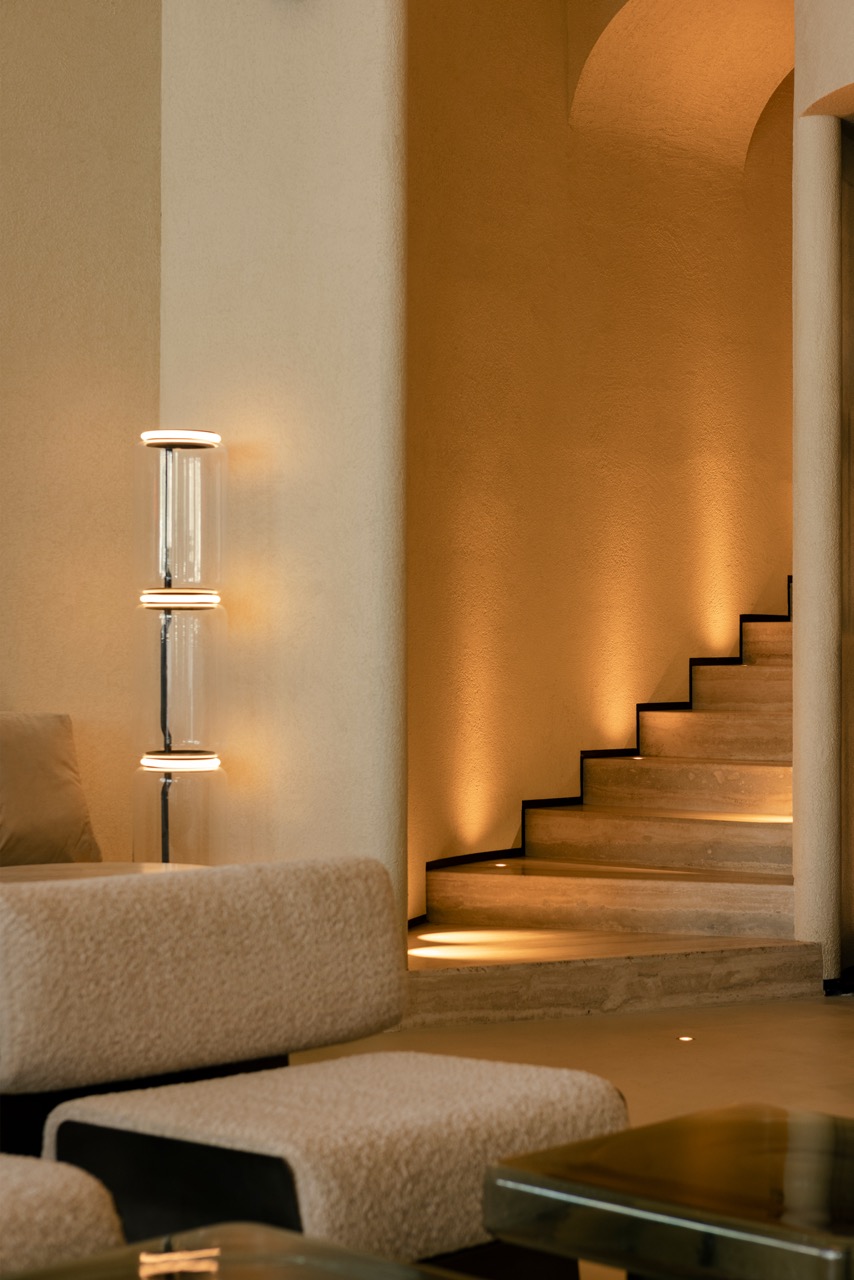
Highlights and decorative lighting are created as an extension of the conceptual idea. Featuring the Noctambule floor lamp by Flos
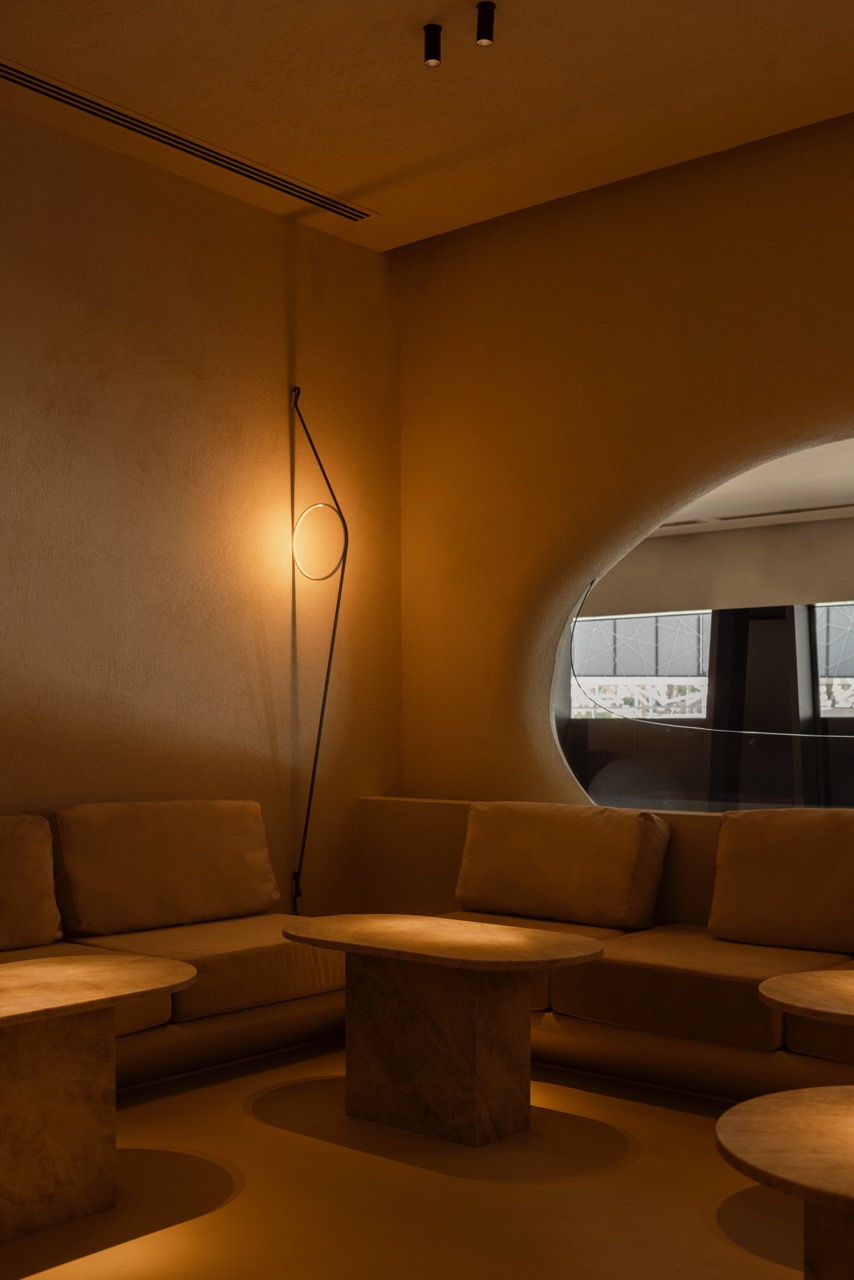
The upper level offers relaxed lounging; featuring the Wirering wall lamp by Flos
By day, the terrace offers shade with greenery that filters through the sharp desert light. By night, panoramic glazing dissolves into darkness, and the interior takes on a distinct mood. “A standout feature for us is the Moon chandelier by Davide Groppi,” Klimov shares. “As evening falls, the Moon appears in space, enveloping the interior like the Earth’s satellite, slowly immersing it in a nocturnal cradle.”
Light is an active participant in the design narrative. It shifts with the day’s rhythm – subtle during the morning, dramatic at dusk, intimate after dark – casting shadows that stretch, soften and dissolve. The designers describe their process as an “experimental search”, an intuitive structuring of ideas, fragments and inspirations that coalesce into a powerful, emotionally resonant environment.
Photography by Lizaveta Kulenenok
.Read more features here
The Latest
How Eywa’s design execution is both challenging and exceptional
Mihir Sanganee, Chief Strategy Officer and Co-Founder at Designsmith shares the journey behind shaping the interior fitout of this regenerative design project
Design Take: MEI by 4SPACE
Where heritage meets modern design.
The Choreographer of Letters
Taking place at the Bassam Freiha Art Foundation until 25 January 2026, this landmark exhibition features Nja Mahdaoui, one of the most influential figures in Arab modern art
A Home Away from Home
This home, designed by Blush International at the Atlantis The Royal Residences, perfectly balances practicality and beauty
Design Take: China Tang Dubai
Heritage aesthetics redefined through scale, texture, and vision.
Dubai Design Week: A Retrospective
The identity team were actively involved in Dubai Design Week and Downtown Design, capturing collaborations and taking part in key dialogues with the industry. Here’s an overview.
Highlights of Cairo Design Week 2025
Art, architecture, and culture shaped up this year's Cairo Design Week.
A Modern Haven
Sophie Paterson Interiors brings a refined, contemporary sensibility to a family home in Oman, blending soft luxury with subtle nods to local heritage
Past Reveals Future
Maison&Objet Paris returns from 15 to 19 January 2026 under the banner of excellence and savoir-faire
Sensory Design
Designed by Wangan Studio, this avant-garde space, dedicated to care, feels like a contemporary art gallery
Winner’s Panel with IF Hub
identity gathered for a conversation on 'The Art of Design - Curation and Storytelling'.
Building Spaces That Endure
identity hosted a panel in collaboration with GROHE.

